Special Report
20 Sandwiches (and Fillings) Americans Can’t Stop Eating
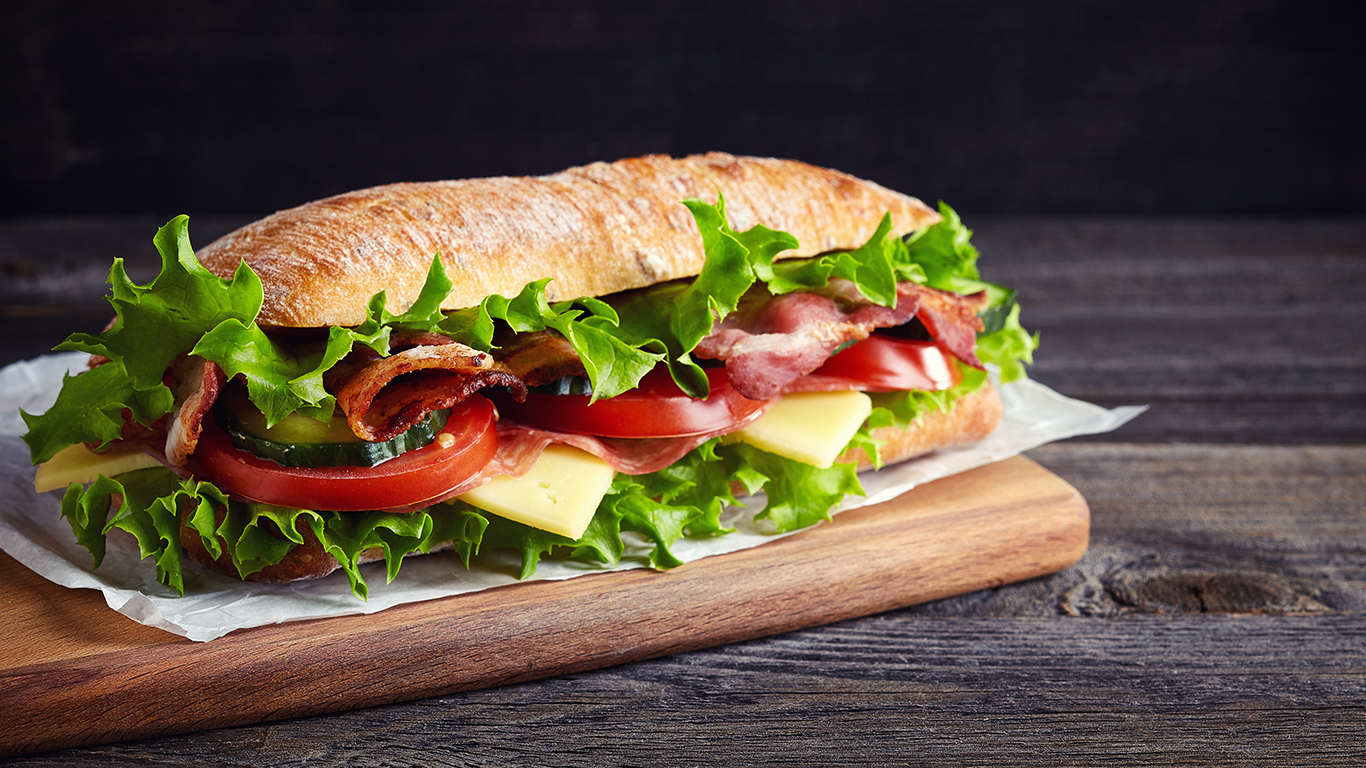
Published:
Last Updated:

By now everybody has probably heard the familiar story about how John Montagu, the Fourth Earl of Sandwich, invented the ubiquitous food item that bears his earldom’s name. In case not: Reluctant to leave the gaming tables to which he was addicted, even to eat, Montagu is said to have asked his valet to bring him a piece of meat tucked between two pieces of bread, thus starting a fad soon taken up by his peers and eventually the whole world.
Of course, connecting bread with some form of protein or vegetable is an obvious idea, and when Shakespeare and other 16th and 17th English people referred to “bread and meat” or “bread and cheese,” a sandwich is likely what they were describing.
In America today, we eat sandwiches of many kinds — a great many of them still involving meat and/or cheese. Some studies have calculated that as a nation, we consume more than 300 million sandwiches a day — a staggering statistic if true since the current U.S. population is only about 330 million.
Click here for 20 of America’s most popular sandwiches.
How many kinds of sandwiches are there in this country? That’s impossible to estimate, because sandwiches from other cultures — Vietnam’s bánh mi, Mexico’s tortas and cemitas, Argentina’s choripán, etc. — get added to our menus constantly, and American sandwich shops invent new combinations almost daily.
Some sandwiches though are classics, essential parts of the American diet. 24/7 Tempo has scoured restaurant industry studies, online “best sandwich” lists, and sandwich shop and deli menus to come up with a list of 20 of America’s most popular sandwiches.
This is hardly an exhaustive list. It doesn’t include regional specialties like the beef on weck or spiedie of upstate New York, Missouri’s St. Paul sandwich, or the muffuletta and assorted po’ boys of New Orleans. Missing, too, apart from two brief mention, are open-face sandwiches.
Hot dogs and hamburgers are left out, too: Many thousands of words have been written debating whether or not they actually fit into the sandwich category. The consensus seems to be that they are not, despite the fact that Merriam-Webster defines “sandwich” as “two or more slices of bread or a split roll having a filling in between,” and they obviously fit the bill.
What is here, however, is an array of diverse and delicious sandwiches with varying origins and an undisputed place in American gastronomic life.
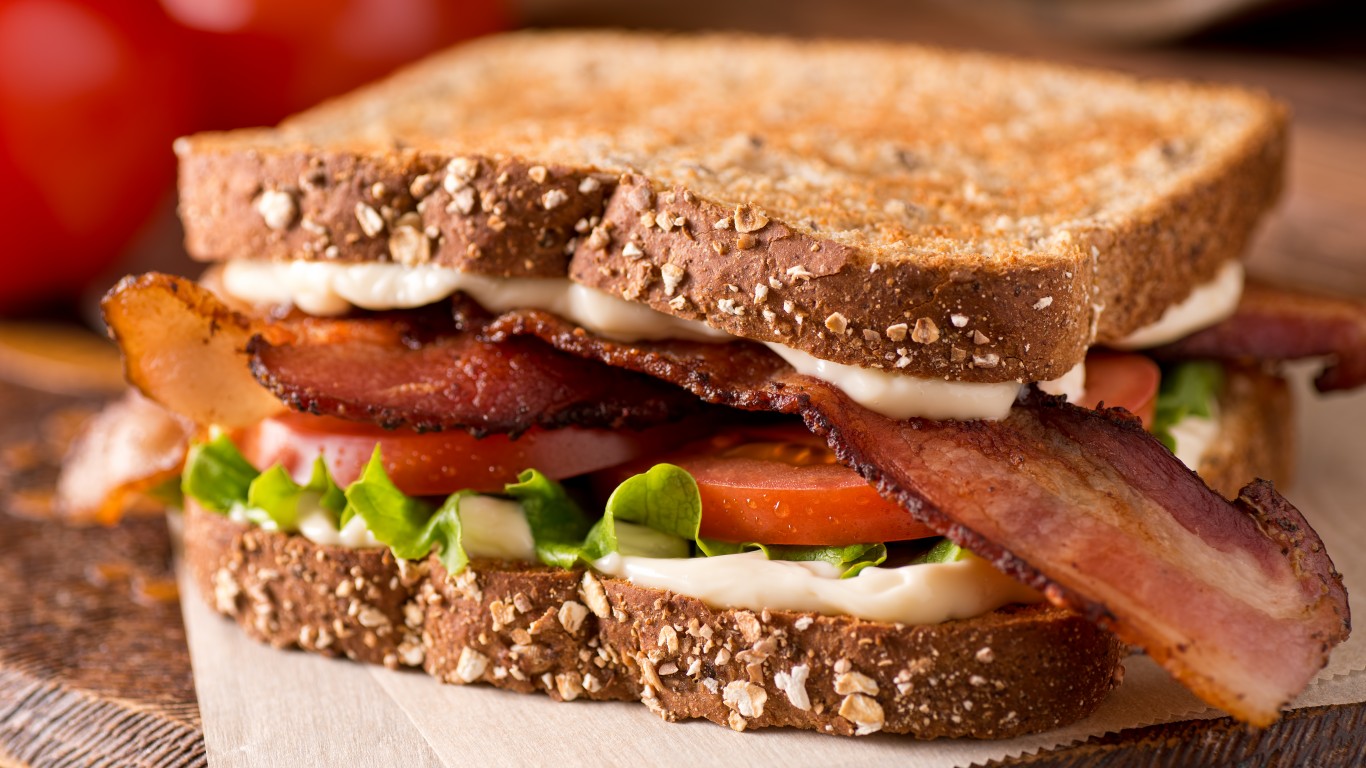
BLT
This favorite, best eaten when ripe local tomatoes are in season, probably descended from the club sandwich (see below), which is similar but has another ingredient or two. A recipe for a tomato and bacon sandwich (though it included lettuce) appeared in print as early as 1920. References to it as a “BLT” apparently date from the 1950s. Food historian John Mariani suggests that the acronym was originally a diner slang term for the sandwich.
[in-text-ad]
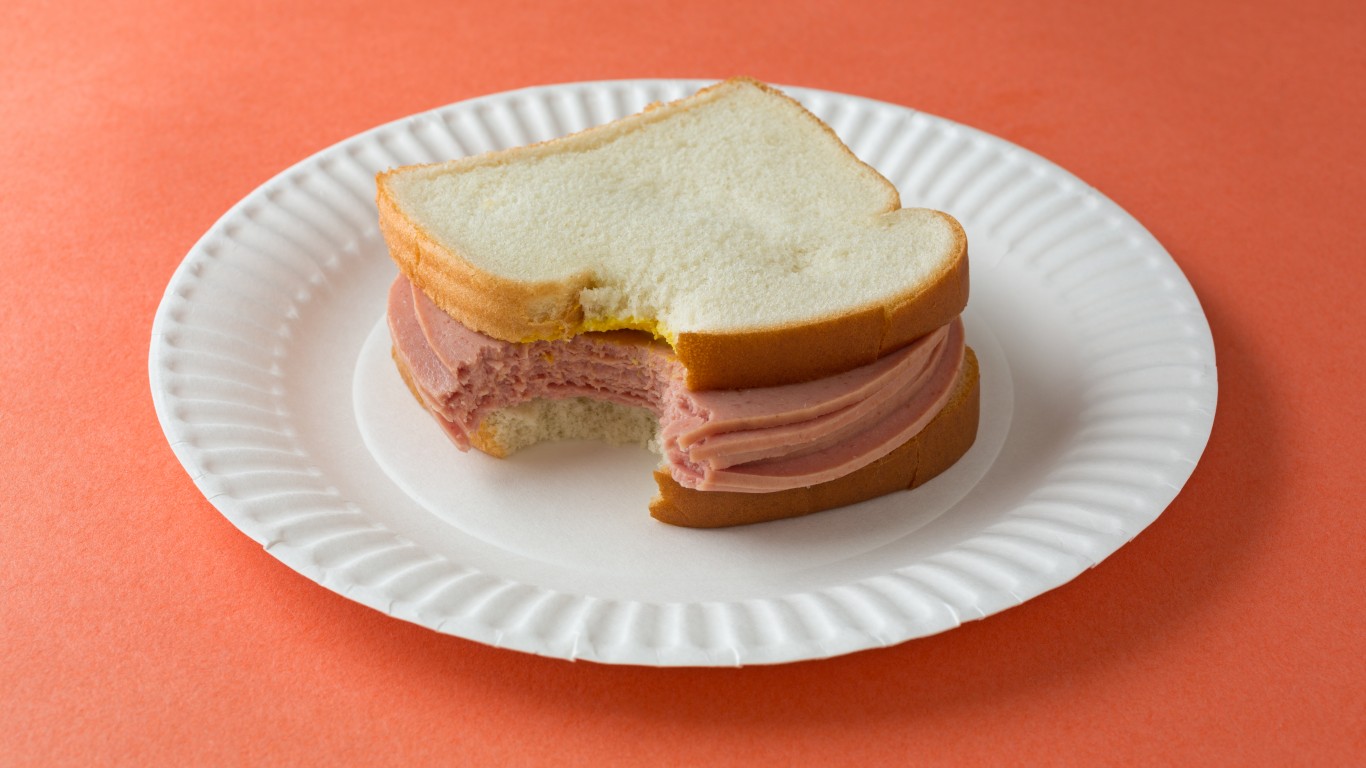
Bologna
Bologna — or “baloney” — is the Americanized version of Italy’s mortadella, a kind of soft, fat-flecked sausage that comes from the Italian city of, yes, Bologna. It’s a popular deli sandwich meat — so popular, in fact, that one of the major producers of the sandwich, Oscar Mayer, once estimated that Americans ate some 2.2 billion of its bologna sandwiches every year. Though it’s often eaten cold, crispy fried bologna is also very popular.
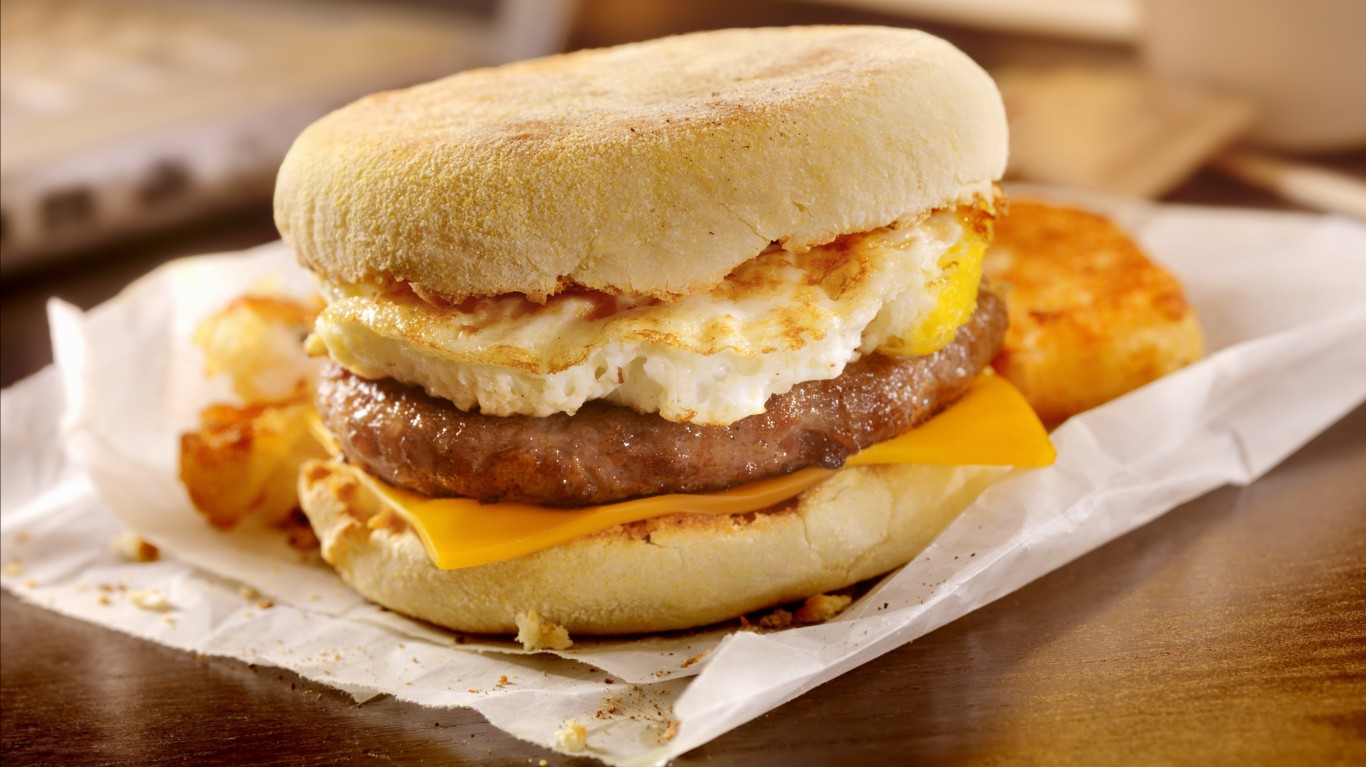
Breakfast sandwich
The idea of a sandwich eaten for breakfast may have originated among factory workers in 19th-century London. American workers adopted the idea, but it was the fast-food industry that brought it into the mainstream. Jack in the Box introduced an English muffin breakfast sandwich in 1969, but it was with the Egg McMuffin at McDonald’s, first sold in 1972, that the idea really took off. Today, breakfast sandwiches — offered not only by chains but by delis and snack bars all over the country — almost always include eggs, meat (mainly bacon, sausage, or ham), and cheese, and are served on kaiser rolls, English muffins, biscuits, toast, bagels, or almost anything else. There are even breakfast sandwiches in the form of burritos.
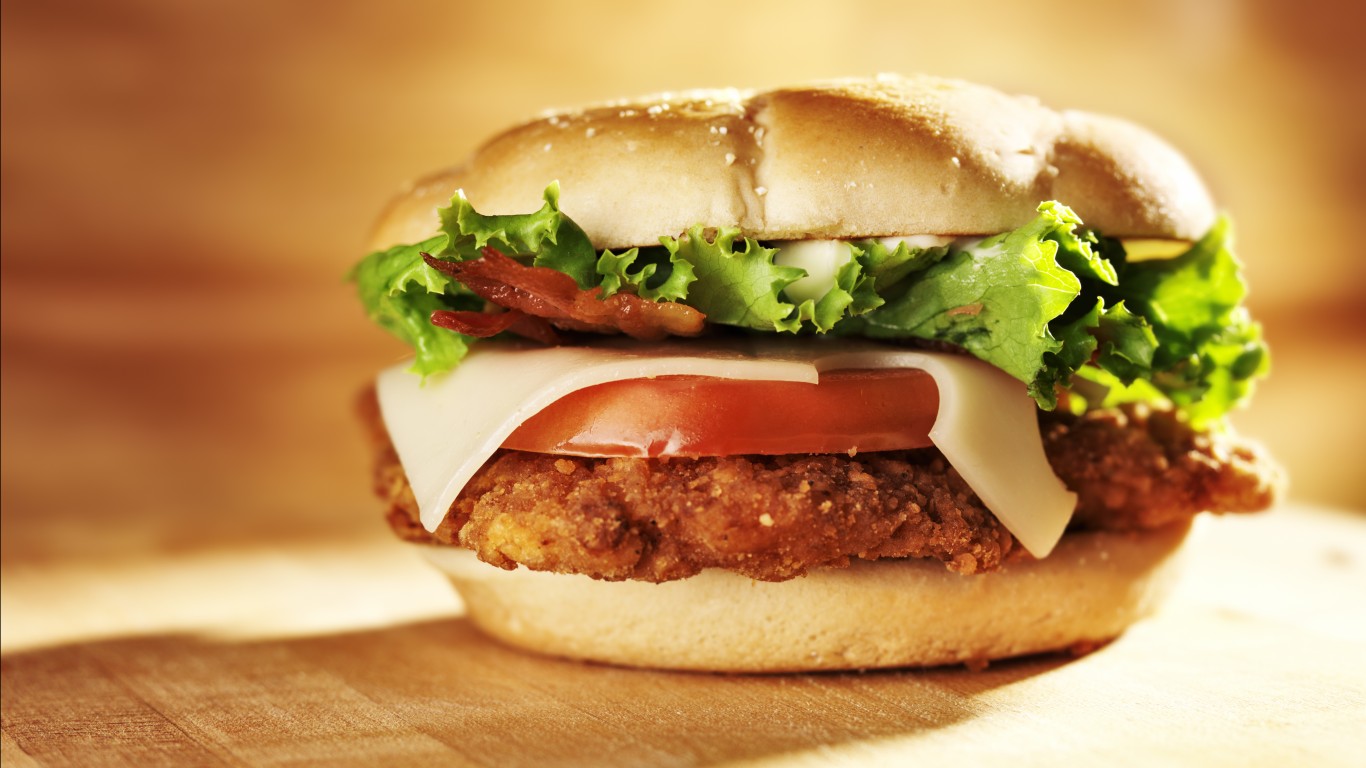
Chicken
Chicken sandwiches — usually deep-fried breaded or battered boneless chicken breast patties — are hot today. New York-based celebrity chef David Chang of Momofuku got into the game with his Fuku restaurants and sports stadium stands. The ubiquitous Shake Shack chain has its own version. So do virtually all other burger chain, including McDonald’s and Burger King. The category is pretty much owned, however, by Chick-fil-A, the controversial Atlanta-based chain that claims to have invented the sandwich in 1961. Company founder S. Truett Cathy liked to say that his chain held the world record for cooking a chicken breast — four minutes.
[in-text-ad-2]
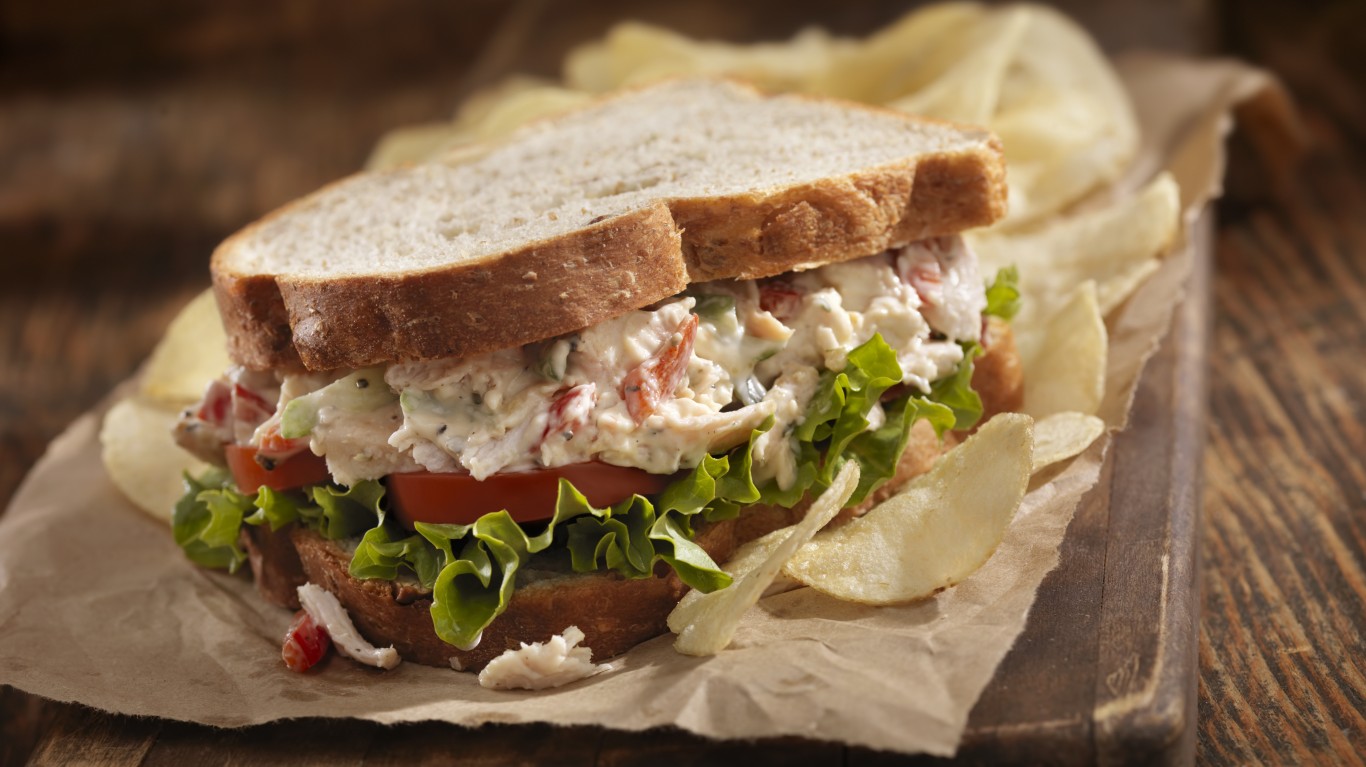
Chicken salad
Chicken salad in the sense of cold shredded or chopped chicken mixed with some kind of sauce or dressing may date back to ancient China. The earliest recipe for something similar to what we think of as chicken salad today may be that from an 1881 cookbook called “What Mrs. Fisher Knows About Old Southern Cooking,” in which the author combines the chicken with celery and dresses it in homemade mayonnaise. Exactly when chicken salad first got sandwiched between two pieces of bread isn’t known, but credit is sometimes given to the proprietor of a deli and butcher shop called Town Meats in Wakefield, Rhode Island, who made sandwiches filled with leftover cut-up chicken mixed with mayonnaise, grapes, and tarragon, back in 1963.
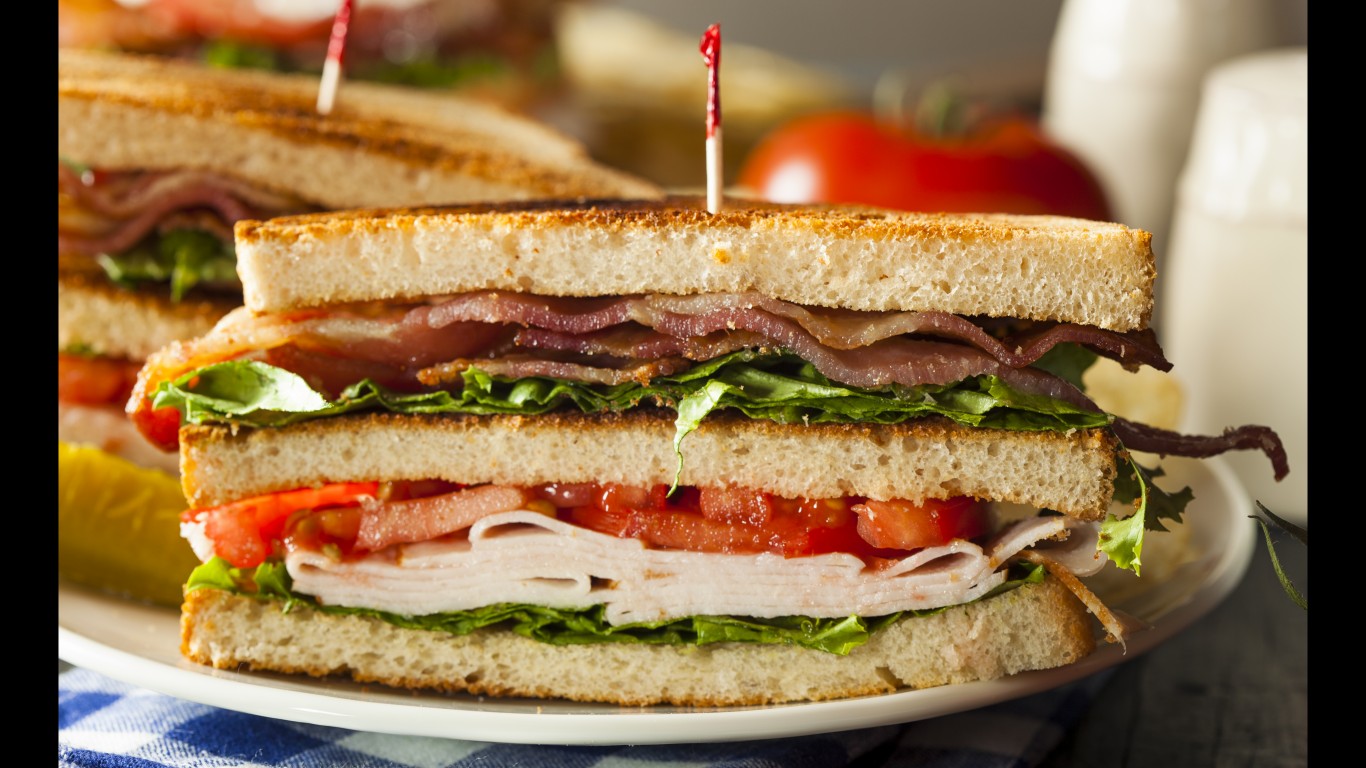
Club
The club sandwich was probably invented in America in the late 19th or early 20th century, possibly at men’s social clubs (at least one source ascribes it to the Saratoga Club in Saratoga, New York). Considered the forerunner of the BLT, it is basically the same sandwich, but with thin-sliced chicken or turkey added — though some versions enhance it with ham and/or cheese. It is often made as a triple-decker.
[in-text-ad]
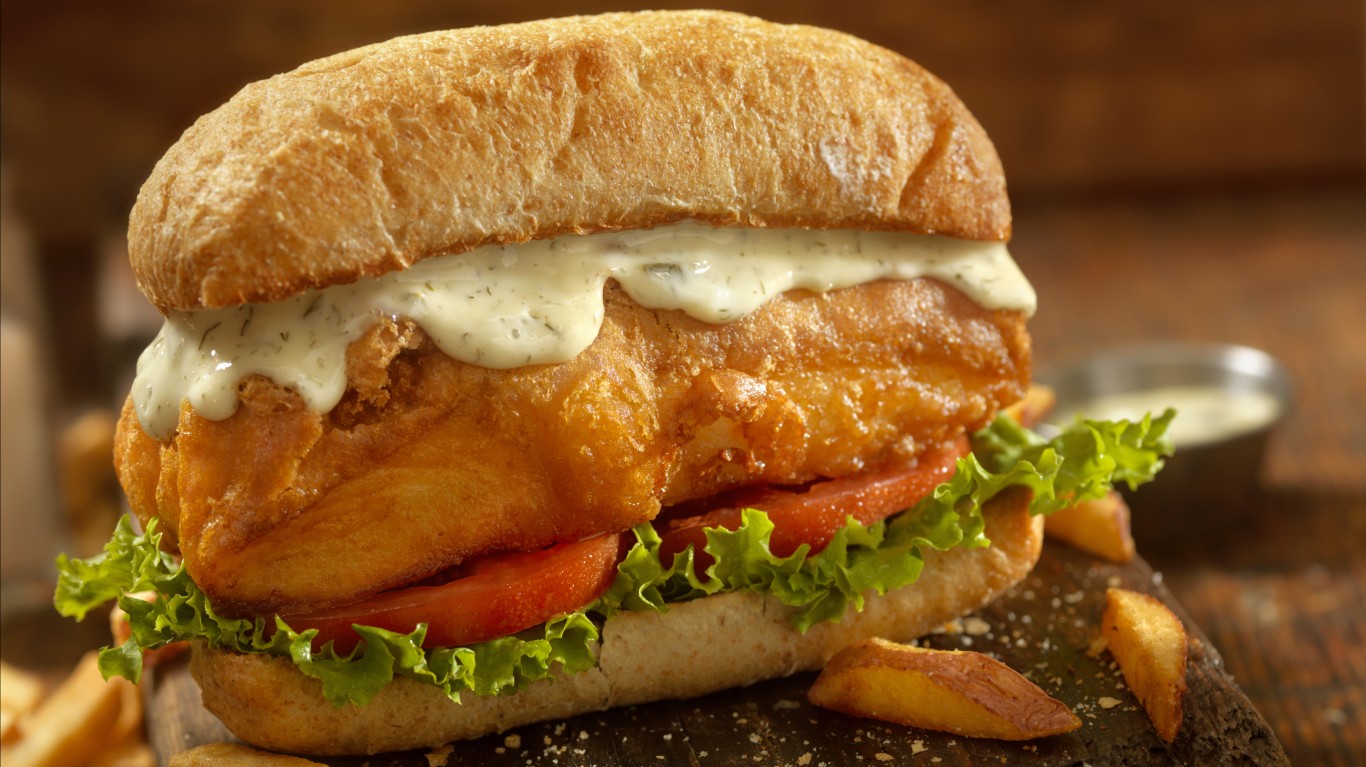
Fish
This isn’t a tuna salad sandwich or a tuna melt (see below), but fried fish between two slices of bread or on a bun. Though the McDonald’s Filet-O-Fish sandwich — invented by a Cincinnati franchisee in 1962 as a Lenten specialty — is particularly well known, it has many antecedents. Fried fish sandwiches were a fad in Charleston, South Carolina, in the early 20th century. Hot (in the sense of spicy) fish sandwiches were once a staple of church picnics in Nashville. Bay Port, Michigan’s annual Fish Sandwich Festival dates back to 1949. Today, fish sandwiches are common at many fast-food places and casual restaurants around the country.
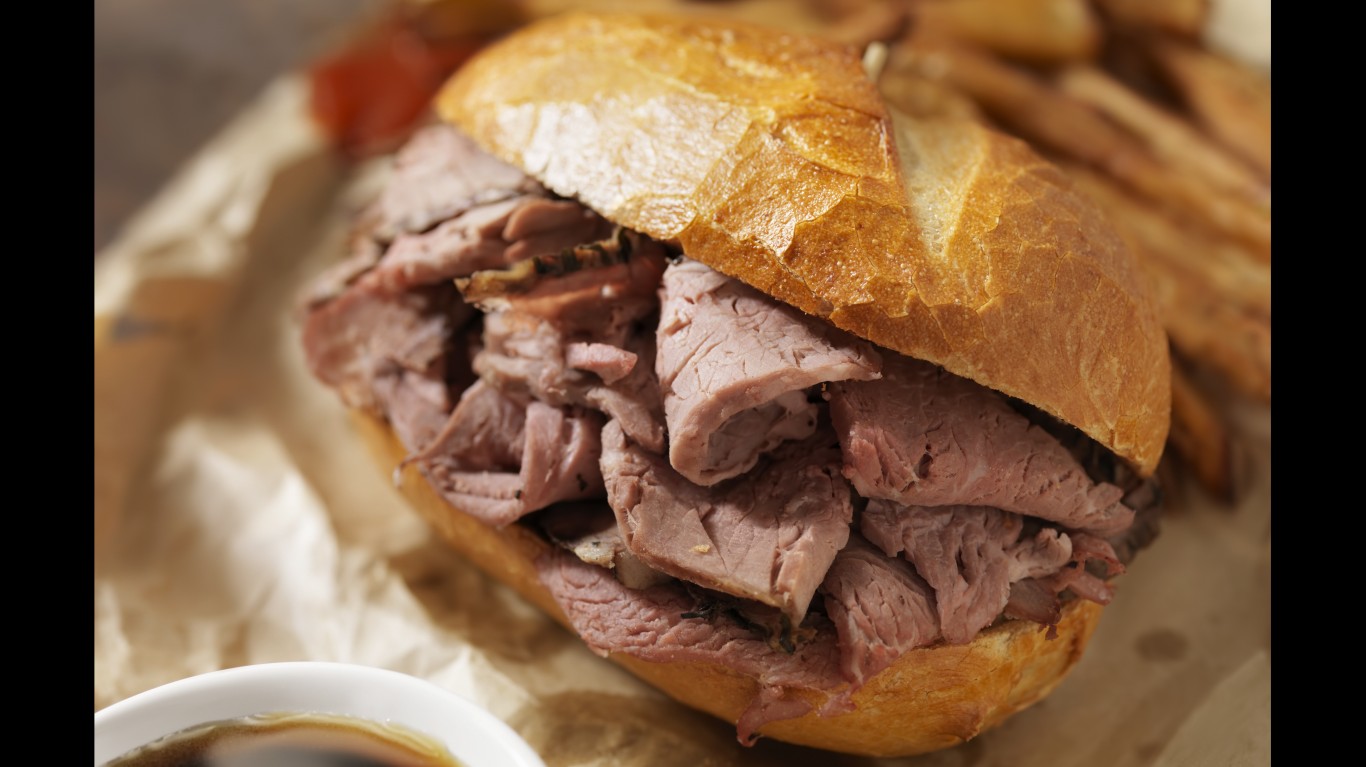
French dip
The French dip sandwich — thin-sliced roast beef on a French roll whose cut sides have been dipped into beef juices — isn’t French, but its creator was. Philippe Mathieu owned a sandwich shop and deli in downtown Los Angeles. There, in 1918, the story goes, he was making a sandwich for a policeman and accidentally dropped the roll into the roasting pan. It tasted good, and a sandwich classic was born. The restaurant, which still exists (under the name Philippe the Original), now also makes the French dip with pork, lamb, turkey, or ham, and adds cheese on request.
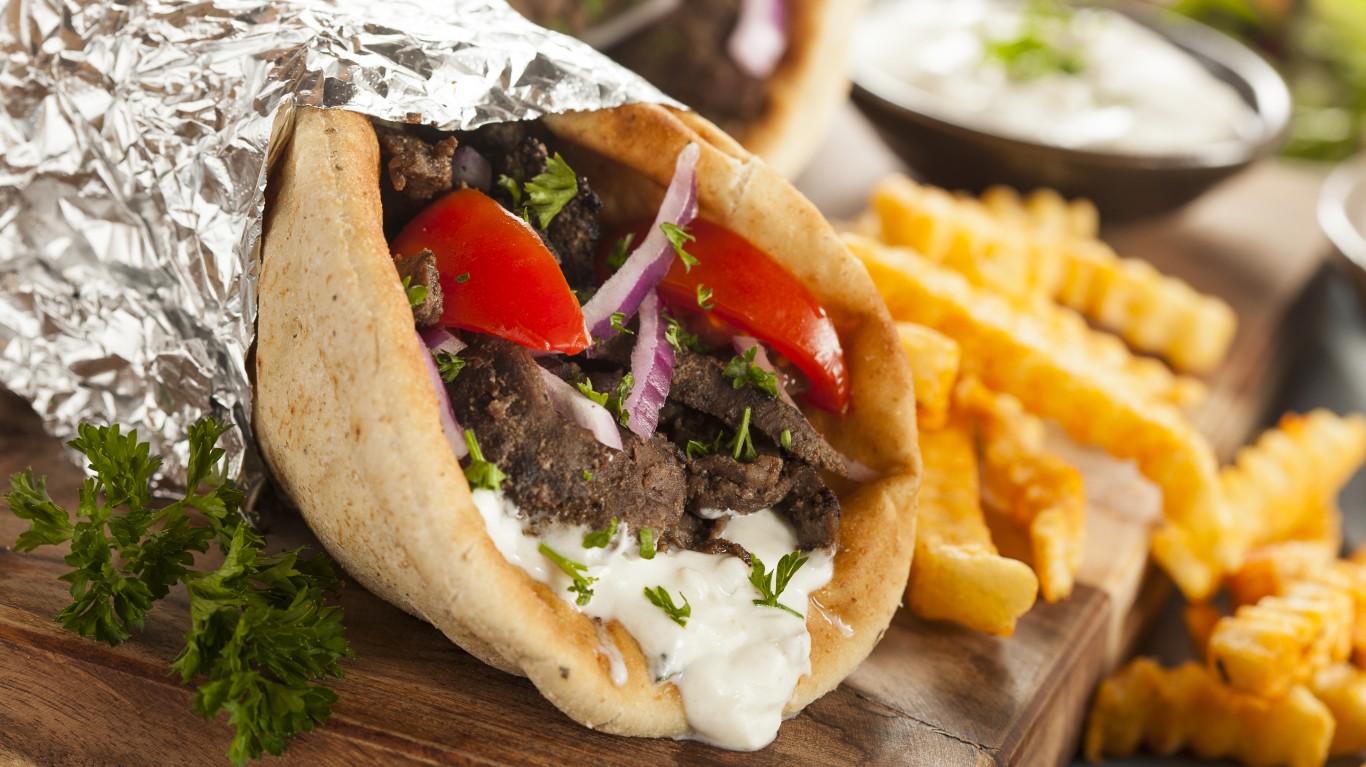
Gyro
In Greece and throughout the Middle East, seasoned meat (usually lamb) has for centuries been roasted on vertical spits, then shaved off and folded into a pita or some similar bread. Gyros — pronounced “GEE-roes” or “YEE-roes” — are the Greek-American version, taking their name from the Greek word gýros, meaning “round” or “turn.”
[in-text-ad-2]
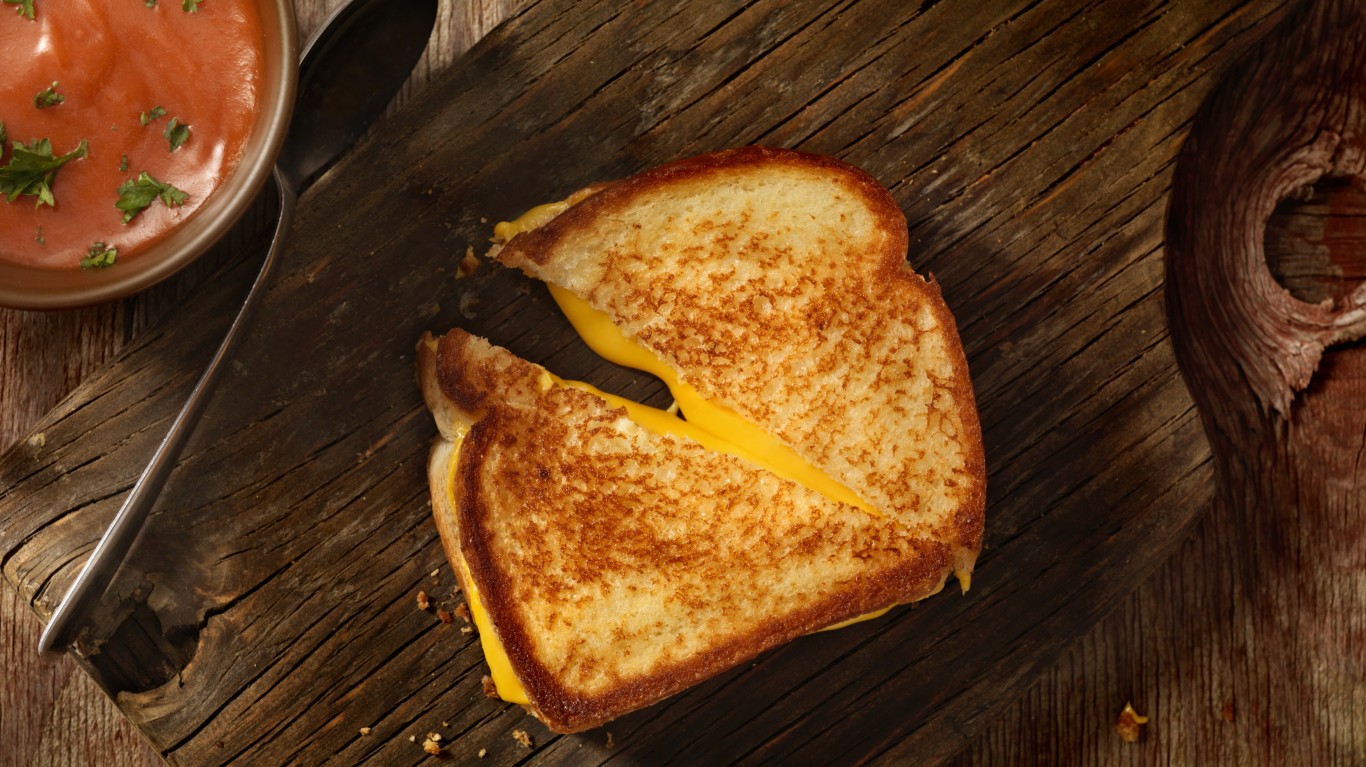
Grilled cheese
Some combination of bread and cheese, heated so that the cheese melts, has probably existed since ancient times. The sandwich as we know it today most likely dates from the 1920s, when sliced white bread and mass-market cheese became widely available. More recent elaborations of this straightforward classic include versions that add man ‘n’ cheese, pulled pork, french fries, fried chicken, crab meat, lobster, and even strawberries to the basic recipe.
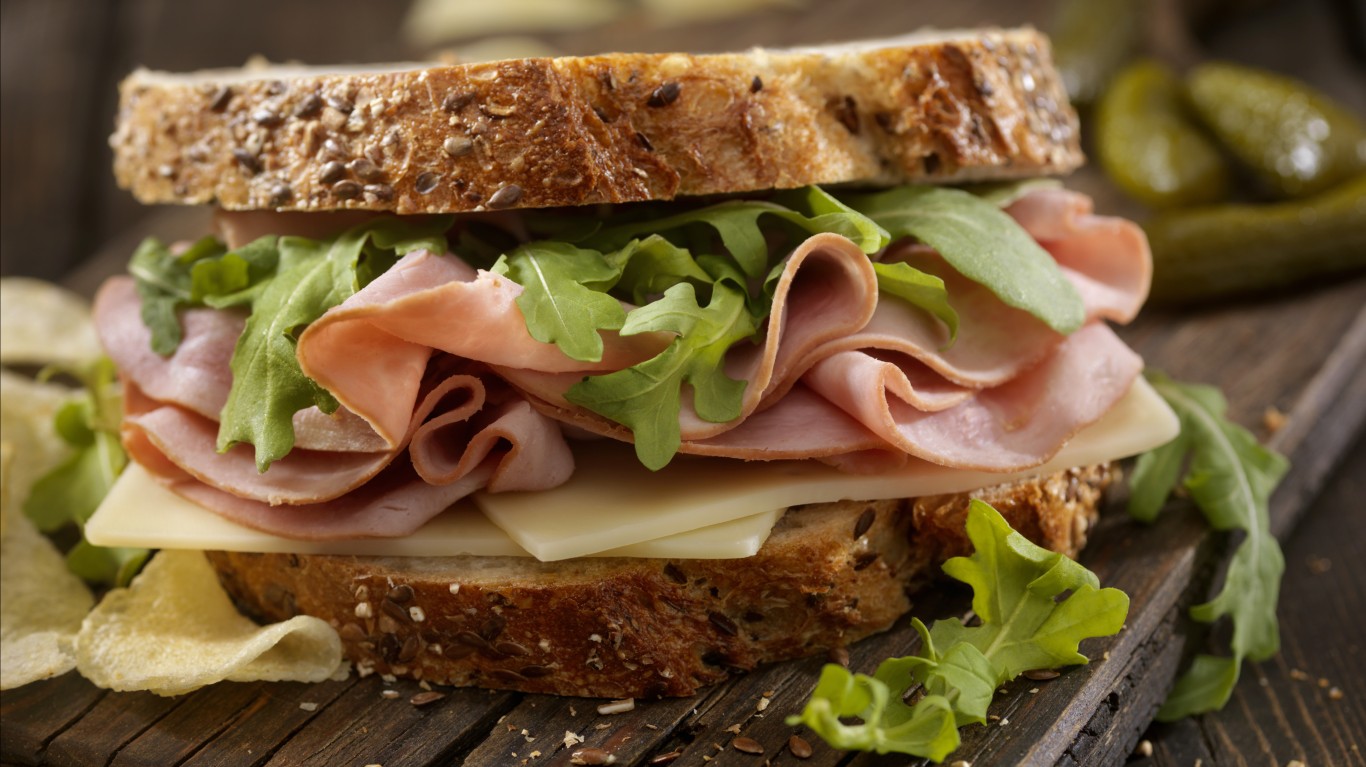
Ham
According to research done in 2014 by Datassential, a food industry market research firm, ham was the second most popular sandwich filling in America (turkey was No. 1; see below). Ham has been popular for a while. The Oxford Companion to Food reports that in 1850, there were some 70 street vendors selling ham sandwiches in London. An English writer, Elizabeth Leslie, apparently introduced them to America in 1840, publishing a recipe for “slightly buttered” bread (“a very little mustard” was optional) sandwiching a very thin slice of cold boiled ham. Today, with more than a single slice involved and often with cheese added, the ham sandwich is a deli staple.
[in-text-ad]
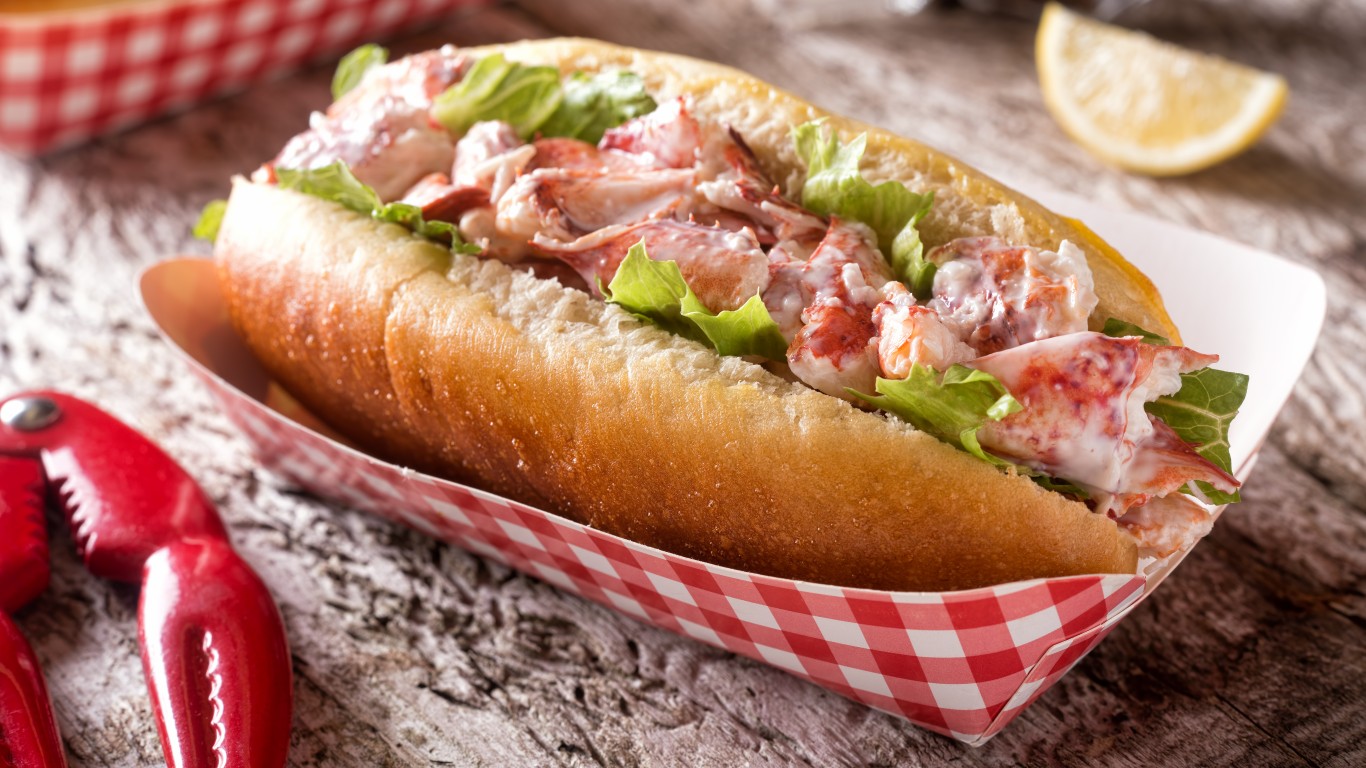
Lobster roll
Is the lobster roll a sandwich? Almost everybody calls it one — and the mail-order seafood company Lobster Anywhere even hails it as “the official summer sandwich.” The first lobster roll on record was made in 1929 at a restaurant called Perry’s in Milford, Connecticut. It was simply pieces of lobster cloaked in butter, served warm on a hot dog bun. The more familiar version, made with cold lobster, often lightly dressed with mayonnaise, is associated with Maine — but in fact was first popularized in the mid-1960s on Long Island. Cold lobster rolls (some versions add chopped celery and other ingredients) are typically served on a kind of hot dog bun split open on the top, rather than on the side. The hot Connecticut style often comes on a hamburger bun or similar roll.
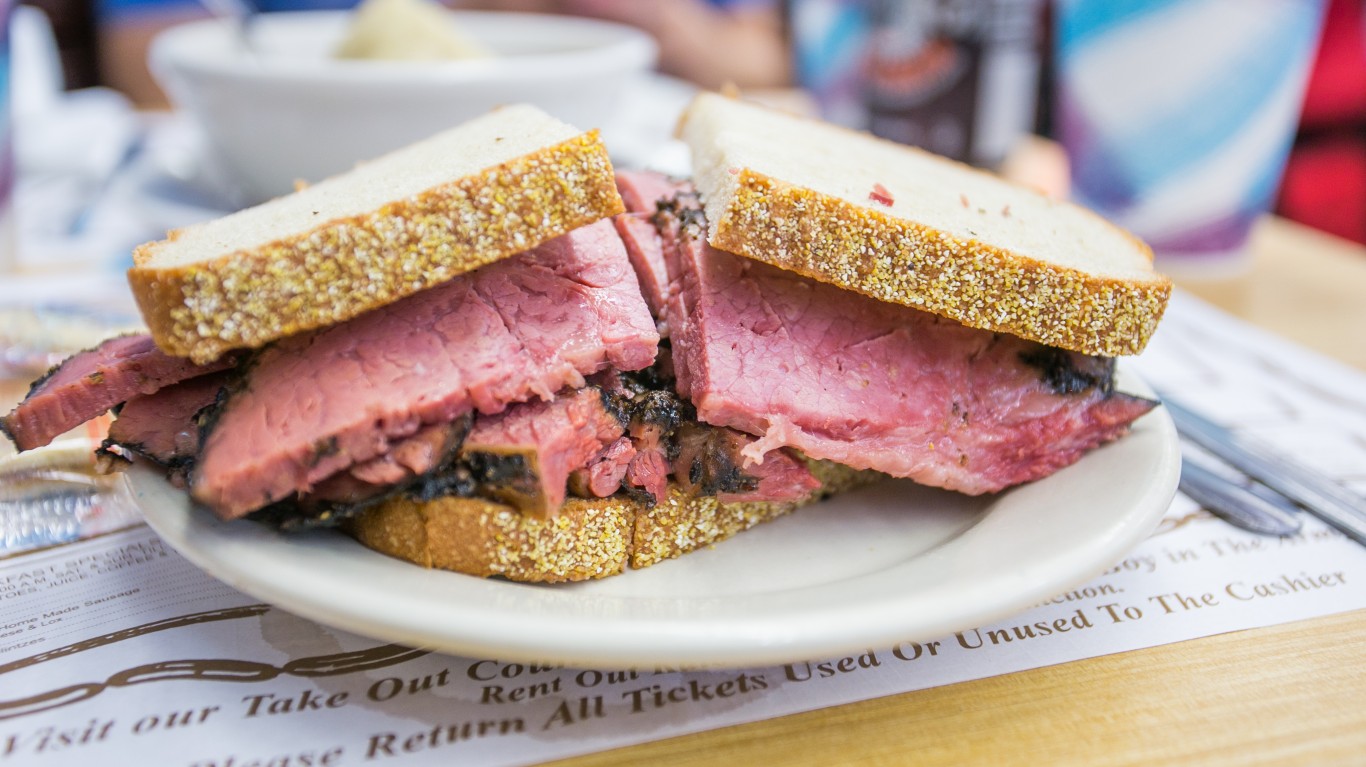
Pastrami
The Eastern and Central European ancestor of pastrami was spiced, air-dried beef. American Jewish deli pastrami is beef, too, but the processing is more complicated. It is sometimes made from brisket (like corned beef), but more often comes from the navel, a fatty cut next to the brisket. It’s cured in brine, seasoned, and then smoked. For sandwiches, the form in which it’s mostly eaten, pastrami — like corned beef — is sliced thin and served on rye, always with mustard.
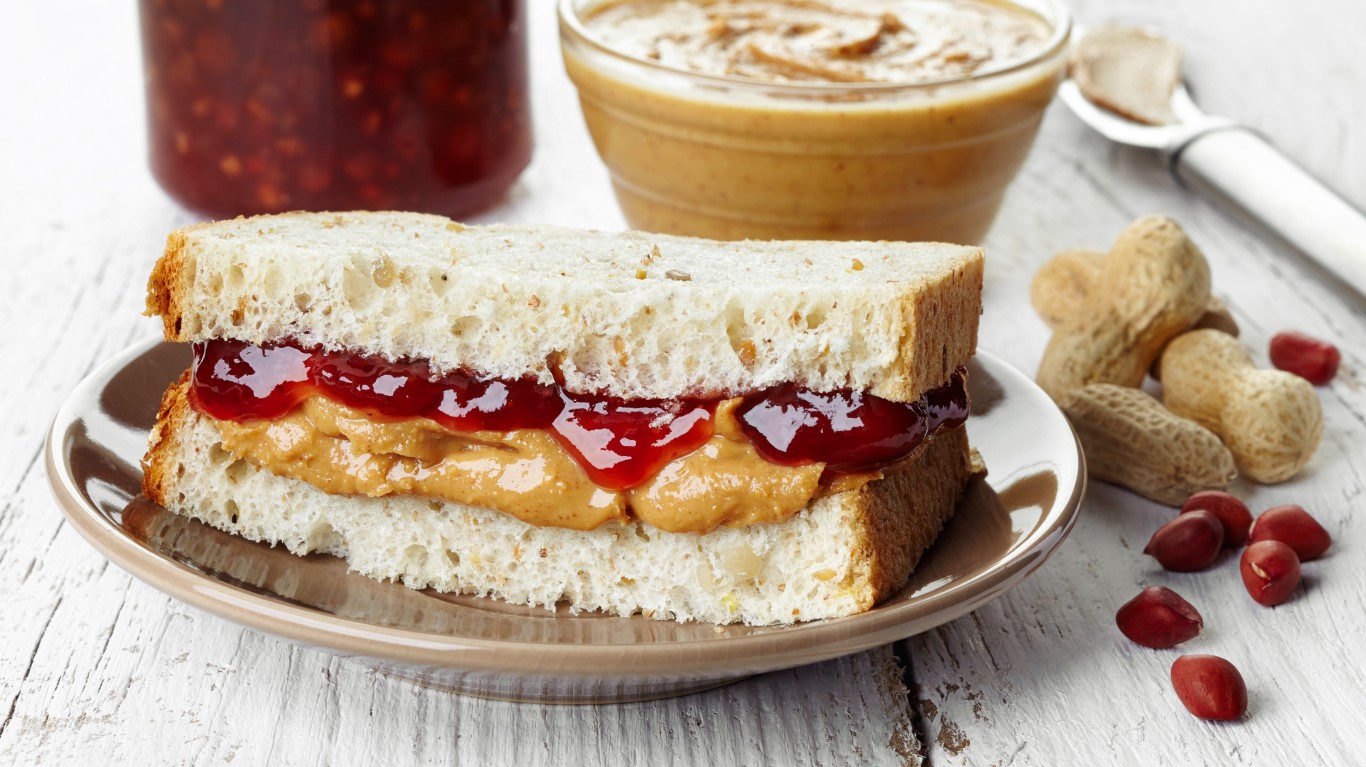
Peanut butter and jelly
This quintessential childhood favorite was first mentioned in print in 1901 but became truly popular in the 1920s, with the invention of pre-sliced bread and a decline in the price of peanut butter, which had previously been something of a luxury. Recipe books from the era suggested alternatives, combining peanut butter with everything from apricots to tomatoes. And of course Elvis Presley later became famous for his love of peanut butter and banana sandwiches fried in butter.
[in-text-ad-2]
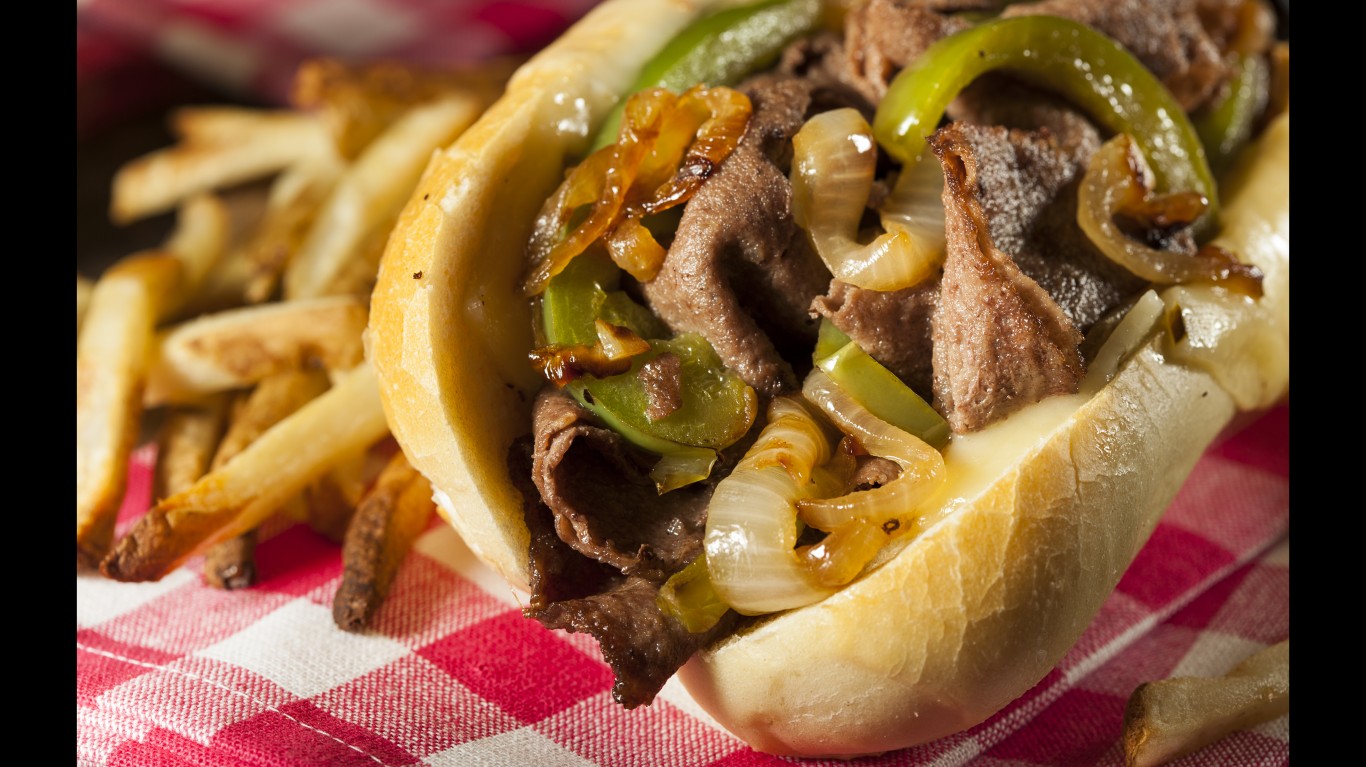
Philly cheesesteak
This Philadelphia specialty, now found all over the country, is composed of thin-sliced beef, cheese (processed Cheez Whiz, according to purists, though sliced American cheese and other varieties are also used), and often sauteed onions on a crusty Italian-style roll. It may have been invented in the city’s Pat’s Restaurant — still going strong under the name Pat’s King of Steaks — in 1930.
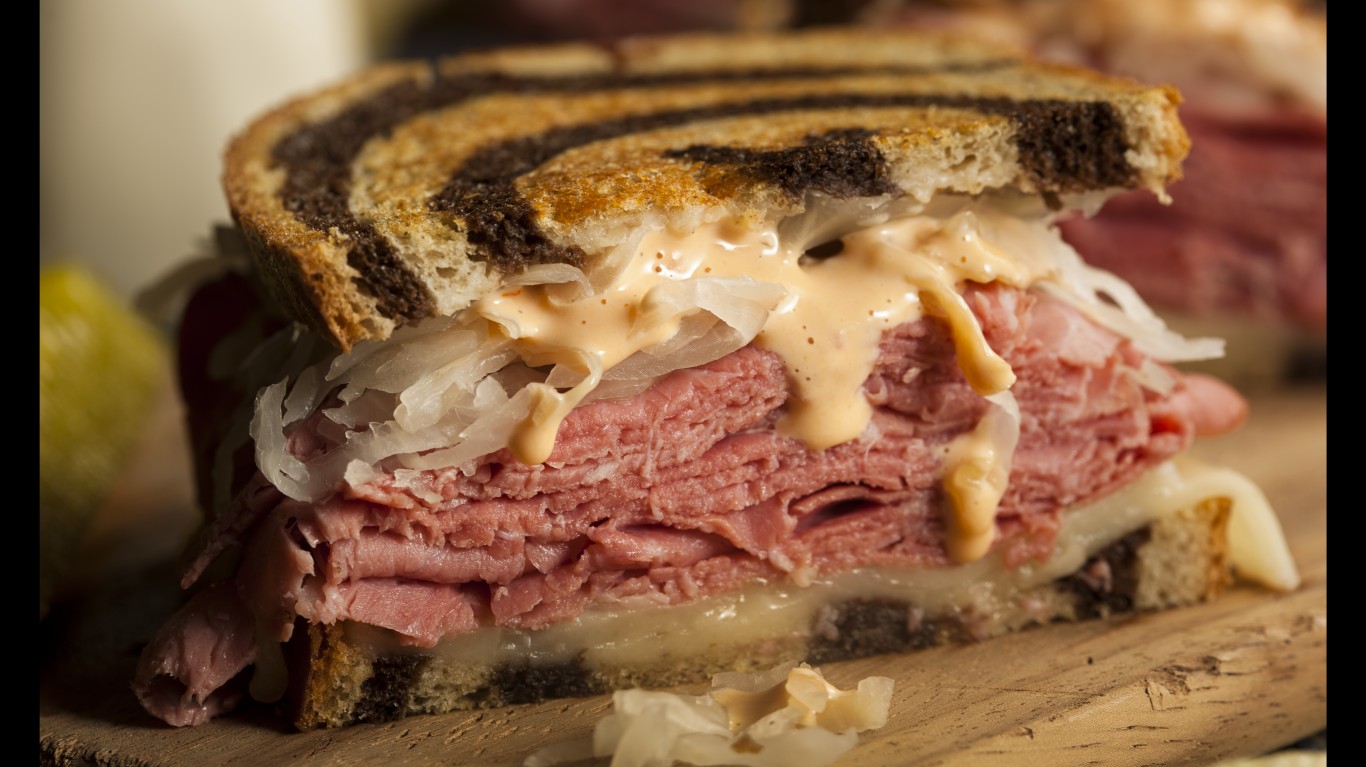
Reuben
Invented in the 1920s, either by an Omaha hotel chef named Reuben Kulakofsky or by a Manhattan deli owner Arnold Reuben (most sources favor the former), the Reuben is an elaborate construction of sliced corned beef, Swiss cheese, sauerkraut, and Thousand Island dressing on Russian-style rye bread. It’s often built to a towering height.
[in-text-ad]
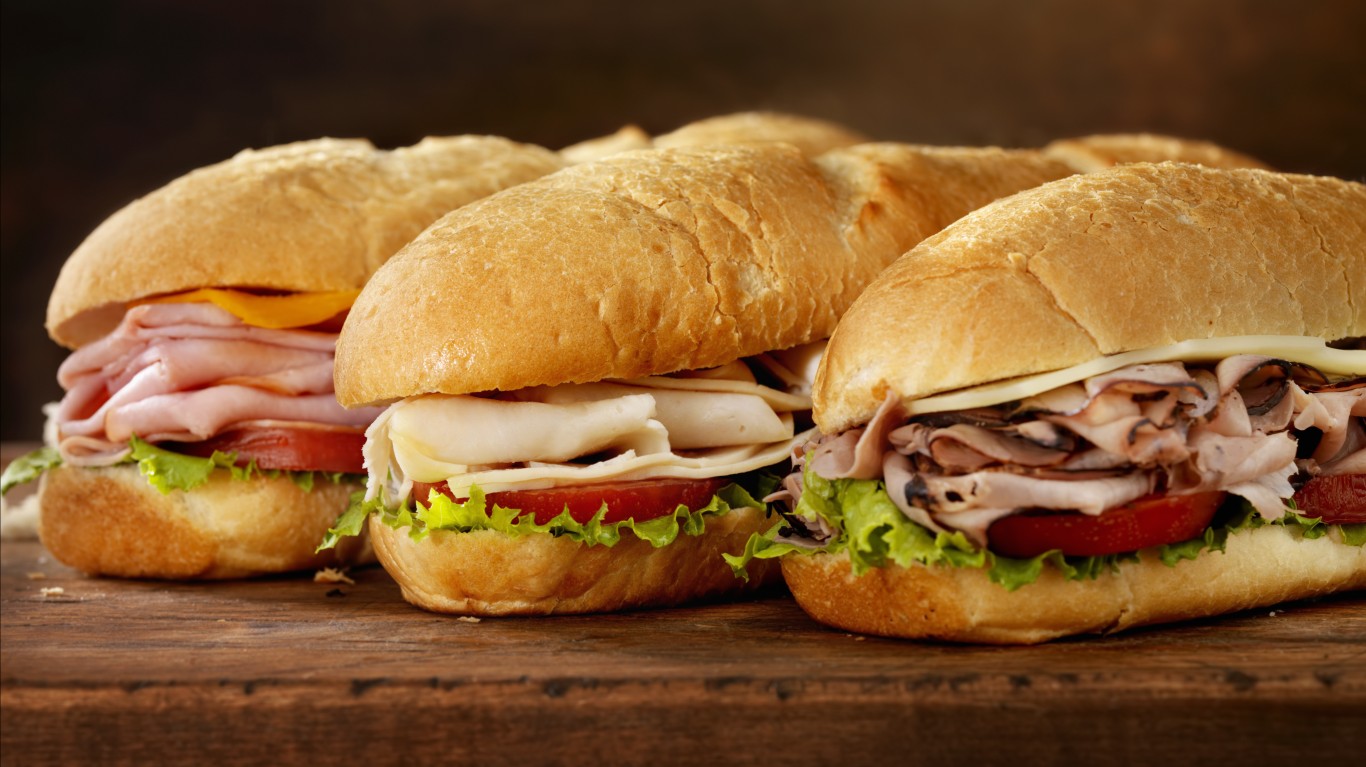
Submarine
Known variously in different regions by a variety of names, including the grinder, the hoagie, the spukie, or the Italian sandwich, this Italian-American deli specialty has New England origins. The original submarine — or just sub — sandwich was likely produced by an Italian immigrant to New London, Connecticut, named Benedetto Capaldo, who is said to have had a baker make him special 12-inch rolls, which he filled with salami and chopped lettuce dressed with olive oil. The sandwich may have gotten its name from its submarine-like shape, or from the fact that Capaldo made the sandwiches by the hundreds for sailors at New London’s massive submarine navy base. Today’s classic subs are filled with assorted Italian-style deli meats (salami, prosciutto, capicola, sopressata, etc.), one or more cheeses, lettuce and tomatoes, and often other vegetables, including green peppers and onions.
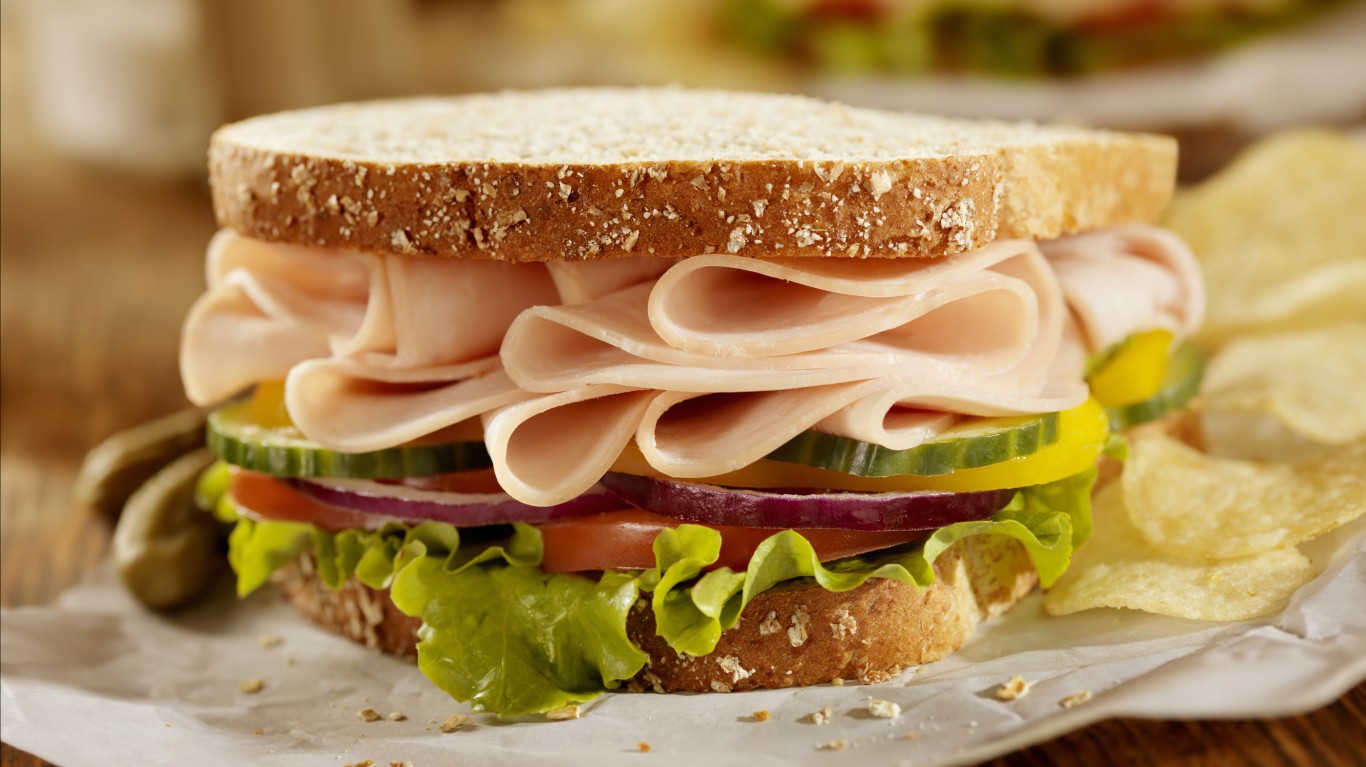
Turkey
Turkey is the most popular sandwich meat in America, according to a 2014 survey. Most of that meat is probably processed deli turkey, which can be a little viscous on its surface and not very flavorful — though some places slice house-roasted turkey for their sandwiches, which makes a big difference in texture and flavor. Adding cheese and/or a flavorful dressing like pesto or aïoli helps elevate a turkey sandwich, too. A variation that was once a lunch counter favorite but isn’t seen much any more is the open-face hot turkey sandwich — sliced turkey on white bread, covered with gravy.
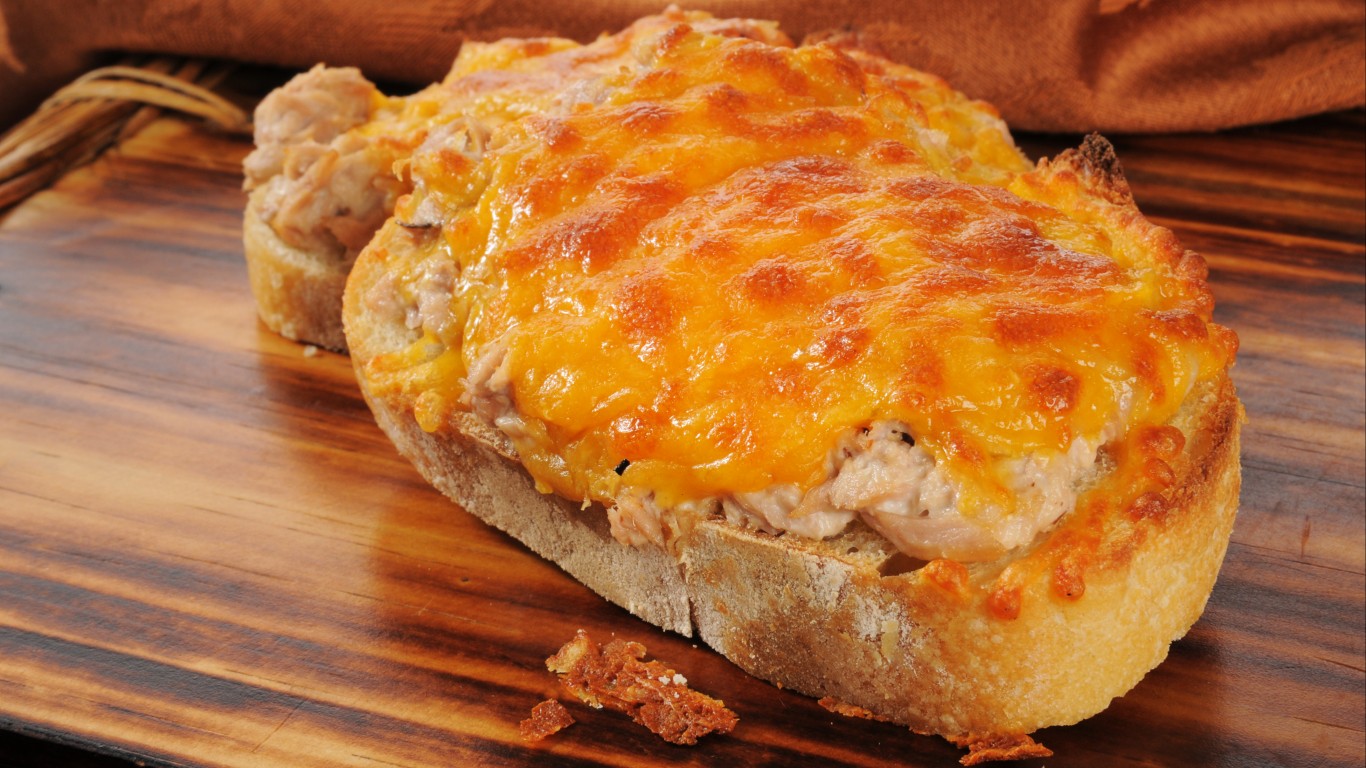
Tuna melt
Canned tuna became available in America in the early 20th century, and by the 1920s, tuna salad sandwiches were popular. Versions served open-face with melted cheese on top appeared as early as 1946, but the closed tuna melt sandwich — in effect a tuna grilled cheese — most likely appeared for the first time in the 1960s or ’70s. Cookbook author Jean Anderson cites a fellow food writer as positing that the creator of the sandwich “may have been a dormitory coed with a toaster-oven.”
[in-text-ad-2]

Vegetable
Though most of America’s favorite sandwiches, other than peanut butter and jelly and grilled cheese, involve meat, poultry, or seafood, vegetable sandwiches of various kinds are becoming more popular. Greens including lettuce, arugula, and spinach are just the start. Avocado (and guacamole), grilled eggplant or zucchini, fried or caramelized onions, smashed chickpeas or beans, cucumber, bell peppers, assorted sprouts, and hummus, often with cheese added, are just some of the possibilities. Eggs and tofu expand the meatless options still further. And to end on a vegetarian note, here are some bacon-flavored food the world simply doesn’t need.
If you’re like many Americans and keep your money ‘safe’ in a checking or savings account, think again. The average yield on a savings account is a paltry .4% today, and inflation is much higher. Checking accounts are even worse.
Every day you don’t move to a high-yield savings account that beats inflation, you lose more and more value.
But there is good news. To win qualified customers, some accounts are paying 9-10x this national average. That’s an incredible way to keep your money safe, and get paid at the same time. Our top pick for high yield savings accounts includes other one time cash bonuses, and is FDIC insured.
Click here to see how much more you could be earning on your savings today. It takes just a few minutes and your money could be working for you.
Thank you for reading! Have some feedback for us?
Contact the 24/7 Wall St. editorial team.